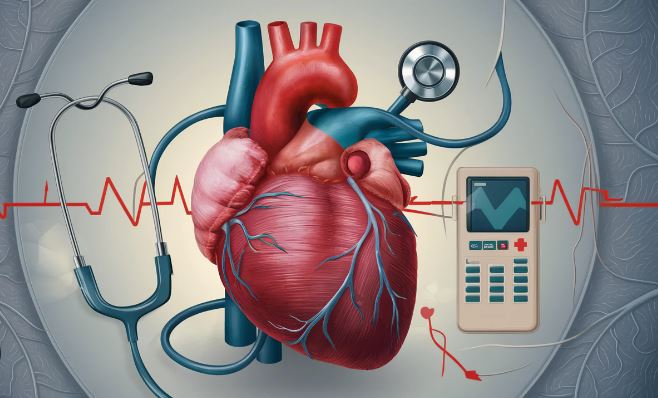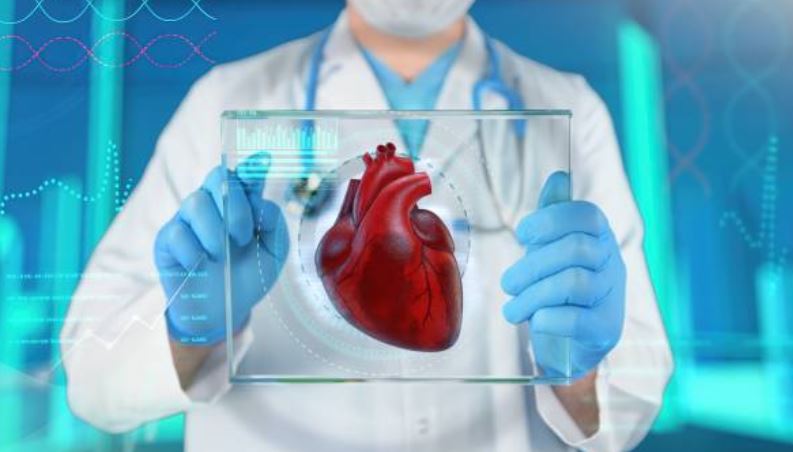
Patients do not even know when they have had a silent heart attack until medical tests are done.
हृदयविकाराचा मूक झटका कधी येऊन गेला हे वैद्यकीय चाचणी होई पर्यंत रुग्णांना माहीतही नसते.
मरीजों को तब तक पता ही नहीं चलता कि उन्हें साइलेंट हार्ट अटैक कब आया है, जब तक कि मेडिकल जांच नहीं हो जाती।
Before a heart attack occurs, our body warns us of danger through various symptoms. Some take these symptoms seriously, while others ignore them in the busyness of work. But this pain can also be life-threatening. Some people even have a silent heart attack. When a heart attack is not felt, it is called a silent heart attack. This is noticed when a medical examination is done some time after a heart attack.
Patients do not even know when they have had this silent heart attack (until medical tests are done). In medical terms, this is called silent ischemia (lack of oxygen to the heart muscle). Many of us have a common misconception that chest pain or discomfort is common during a heart attack. But this is not the case with some. They don’t feel any chest pain, discomfort or any other complaint and hence they don’t even know that they are having a silent heart attack.
As a result, such a silent heart attack can be overlooked. But this is not to be ignored as silent heart attacks can have equally serious health consequences. Therefore, the traditional symptoms of heart attack should be taken as seriously as the silent attacks. Even if such a heart attack occurs without pain, the health damage caused by it is always the same as that caused by a similar heart attack.
When a person suffers a heart attack, there is insufficient blood supply to some part of the heart. As a result, the structure of the heart deteriorates, a blood vessel that a part of the heart depends on for blood supply, a blood clot forming is a common cause of a heart attack. This condition occurs when a blood vessel is punctured and plaque accumulates and collects blood, forming a clot in the blood vessel.
Factors that normally cause heart disease are the same factors that cause silent heart attacks. Diabetes, obesity, high blood pressure, smoking, smoking, previous heart attack, sedentary lifestyle and family history of heart disease are common risk factors for heart disease. People with diabetes are more likely to have a heart attack.
Such persons do not experience any of the symptoms or chest pain that are commonly seen during a heart attack. While some people have these symptoms, they do not realize that these symptoms are coming from the heart. These symptoms are often overlooked, mistaking them for indigestion or pain from a sore muscle. But these may also be symptoms of a silent heart attack, so do not ignore such symptoms and seek medical help as soon as possible.
Regardless of whether the symptoms are of a heart attack or not, a doctor should be consulted. Doctors can accurately diagnose these symptoms and provide appropriate treatment. Many patients have symptoms of a normal heart attack (such as chest pain after exertion, shortness of breath, profuse sweating), but no symptoms of a silent attack. But patients experience the side effects seen after a heart attack. In particular, heart failure can cause shortness of breath, leg swelling and fatigue.
There is also much more to be learned about the differences between the symptoms of heart attacks in men and women. Women, especially young women, are less likely to have conventional symptoms of a silent heart attack and therefore may not realize they are having a heart attack, so doctors need to be aware of the possibility of a silent heart attack when examining patients who may be at risk for a heart attack.
People who suffer from heart disease or have had a heart attack should have their heart checked regularly by a cardiologist. People who have had a heart attack are also at risk of having another heart attack, and a cardiologist can help reduce that risk. Coronary angiography is done regularly to look for clots in the arteries of the heart. Patients with multiple clots in the arteries of the heart can be safely treated using advanced coronary stents.
With the help of modern intra-coronary imaging techniques such as OCT (Optical Coherence Tomography) and IVUS (Intravascular Ultrasound) patients with silent heart attacks can achieve better long-term outcomes. Even after a silent heart attack is diagnosed, drug-eluting stents (ones that release drugs slowly) can improve the blood supply. Heart attack patients are given blood thinners and anti-cholesterol medications along with treatment to control risk factors. Cardiac resynchronization therapy is available to patients with heart failure due to silent heart attacks.
The best way to prevent a heart attack is to make lifestyle changes and get regular health checkups. Lifestyle changes such as eating a healthy diet, adopting an active lifestyle with regular exercise, maintaining a healthy weight and avoiding tobacco use should be made. Regular health check-ups can detect health risk factors early and prevent complications like high blood pressure, high cholesterol, diabetes etc. A routine health check-up should include a blood test, ECG, 2-D echocardiogram and stress test if the patient has any pre-existing risk factors for heart attack.

हृदयविकाराचा मूक झटका कधी येऊन गेला हे वैद्यकीय चाचणी होई पर्यंत रुग्णांना माहीतही नसते…
हृदयविकाराचा झटका येण्या पूर्वी आपले शरीर आपल्याला वेगवेगळ्या लक्षणा मार्फत धोक्याचा इशारा देत असते. काही जण या लक्षणांची गांभीर्याने दखल घेतात, तर काही जण कामाच्या व्यापात या लक्षणांकडे दुर्लक्ष करतात. पण यामुळे हे दुखणे जीवघेणे सुद्धा ठरू शकते. काही जणांना तर सायलेंट हार्ट अटॅक ही (हृदयविकाराचा मूक झटका) येऊन गेलेला असतो. हृदयविकाराचा झटका येत असल्याचे जेव्हा समजत नाही, तेव्हा त्या झटक्याला हृदयविकाराचा मूक झटका म्हणतात. हृदयविकाराचा झटका येऊन गेल्या नंतर काही काळाने वैद्यकीय तपासणी केली असता ही बाब लक्षात येते.
हृदयविकाराचा हा मूक झटका कधी येऊन गेला हे तोपर्यंत (वैद्यकीय चाचणी होई पर्यंत) रुग्णांना माहीतही नसते. वैद्यकीय भाषेत याला सायलेंट इस्केमिया (हृदयातील स्नायूमध्ये ऑक्सिजनची कमतरता भासणे) असे म्हणतात. सर्वसामान्यपणे हृदयविकाराचा झटका येताना छातीत दुखते किंवा अस्वस्थ वाटते, असा आपल्या पैकी अनेकांचा सर्रास समज असतो. पण काहींच्या बाबतीत असे घडत नाही. छातीत दुखण्याची, अस्वस्थ वाटण्याची किंवा इतर कोणतीच तक्रार त्यांना जाणवत नाही आणि त्यामुळेच हृदयविकाराचा मूक झटका आपल्याला येऊन गेल्याचे त्यांना कळतही नाही.
परिणामी, हृदयविकाराचा असा मूक झटका दुर्लक्षिला जाऊ शकतो. पण ही गोष्ट दुर्लक्ष करण्याजोगी अजिबात नाही हृदयविकाराच्या मूक झटक्यांचेही आरोग्यावर तेवढेच गंभीर परिणाम होऊ शकतात. त्यामुळे हृदयविकाराचा झटका येण्या पूर्वी जाणवणाऱ्या पारंपरिक लक्षणांकडे जेवढ्या गांभीर्याने पाहिले जाते, तेवढ्याच गंभीरतेने या मूक झटक्या कडेही पाहायला हवे. हृदयविकाराचा असा झटका वेदने शिवाय आला, तरी त्यामुळे होणारी आरोग्याची हानी ही नेहमी सारख्या हृदयविकाराच्या झटक्यामुळे होते तशीच असते.
कोणत्याही व्यक्तीला जेव्हा हृदयविकाराचा धक्का बसतो, तेव्हा त्याच्या हृदयाच्या काही भागातील रक्तपुरवठा हा अपुऱ्या प्रमाणावर होत असतो. परिणामी, हृदयाची रचना बिघडते, हृदयाचा एखादा भाग ज्या रक्तवाहिनी द्वारे होणाऱ्या रक्तपुरवठ्यावर अवलंबून आहे, त्या रक्तवाहिनी मध्ये गुठळ्या होणे हे हृदयविकाराचा झटका येण्यामागचे सर्वसामान्यपणे आढळणारे कारण आहे. रक्तवाहिनीला छेद जाऊन त्यात प्लाक जमा होऊन रक्त साकळल्याने रक्तवाहिनीमध्ये गुठळी तयार होते आणि त्यामुळे ही परिस्थिती उद्भवते.
सामान्यपणे हृदयविकारासाठी जे घटक कारणीभूत असतात, तेच घटक हृदयविकाराच्या मूक झटक्या साठीही कारणीभूत ठरत असतात. मधुमेह, स्थूलपणा, उच्च रक्तदाब, धूम्रपान, तंबाखूसेवन या आधी येऊन गेलेला हृदयविकाराचा झटका, बैठी जीवनशैली आणि हृदयविकाराची कौटुंबिक पार्श्वभूमी हे हृदयविकार येण्यासाठी सर्वसामान्यपणे आढळणारे घटक आहेत. मधुमेह असलेल्या व्यक्तींना हृदयविकाराचा झटका येण्याची शक्यता अधिक असते.
हृदयविकाराचा झटका येताना अशा व्यक्तींना सामान्यपणे आढळणारी लक्षणे किंवा छातीत दुखणे आदी कोणतीही तक्रार जाणवत नाही. तर काही जणांमध्ये अशी लक्षणे दिसून आली, तरी ही लक्षणे हृदयातून येत असल्याचे त्यांना जाणवत नाही. अपचनाचा त्रास किंवा स्नायू दुखावल्या मुळे होणारी वेदना असे समजून या लक्षणांकडे बहुधा दुर्लक्ष होते. पण ही कदाचित हृदयविकाराच्या मूक झटक्याचीही लक्षणे असू शकतात, त्यामुळे अशा लक्षणांकडे दुर्लक्ष न करता शक्य तितक्या तातडीने वैद्यकीय मदत घ्यायला हवी.
दिसत असणारी लक्षणे ही हृदयविकाराच्या झटक्याची असली किंवा नसली तरी सुद्धा डॉक्टरांचा सल्ला घ्यावा. डॉक्टर्स या लक्षणांचे अचूक निदान करून योग्य उपचार करू शकतील. अनेक रुग्णांमध्ये हृदयविकाराच्या सामान्य झटक्याची लक्षणे (जसे- श्रमाचे काम केल्यावर छातीत दुखणे, धाप लागणे, दरदरून घाम फुटणे) दिसतात, तशी कोणतीही लक्षणे मूक झटका येताना दिसत नाहीत. पण रुग्णांना हृदयविकाराचा झटका येऊन गेल्यावर दिसणारे दुष्परिणाम अनुभवास येतात. विशेषतः हार्ट फेल्युअर (हृदय निकामी) झाल्यामुळे श्वास घेण्यास त्रास होणे, पायाला सूज येणे आणि थकवा यासारखे परिणाम दिसू लागतात.
हृदयविकाराच्या झटक्यांच्या संदर्भात पुरुष व स्त्रियांमध्ये दिसून येणाऱ्या लक्षणा मधील फरका विषयी सुद्धा अजून बरेच काही जाणून घ्यायचे आहे. हृदयविकाराचा मूक झटका बसतो तेव्हा स्त्रिया मध्ये, विशेषतः तरुणी मध्ये पारंपरिक लक्षणे दिसण्याची शक्यता कमी असते आणि म्हणूनच त्यांना हृदयविकाराचा झटका आल्याचे जाणवत नाही त्यामुळे ज्या रुग्णांमध्ये हृदयविकाराच्या झटक्याचा धोका असू शकतो, त्या रुग्णांची तपासणी करताना हृदयविकाराच्या मूक झटक्याची शक्यता डॉक्टरांनी लक्षात घेणे आवश्यक असते.
ज्या व्यक्तींना हृदयविकाराचा त्रास असेल किंवा हृदयविकाराचा झटका येऊन गेला असेल, त्यांनी नियमितपणे हृदरोगतज्ज्ञांकडून आपल्या हृदयाची तपासणी करून घेणे आवश्यक आहे. ज्या व्यक्तींना हृदयविकाराचा झटका येऊन गेला आहे, त्या व्यक्तींना दुसरा हृदयविकाराचा झटका येण्याचीही शक्यता असते आणि हृदरोगतज्ज्ञ ही जोखीम कमी करण्यासाठी मदत करू शकतात. हृदयातील रक्तवाहिनी मध्ये गुठळ्या झाल्या आहेत का, हे पाहण्यासाठी नियमितपणे कोरोनरी अँजिओग्राफी करण्यात येते. हृदयातील रक्तवाहिन्या मध्ये अनेक गुठळ्या असलेल्या रुग्णांवर अत्याधुनिक कोरोनरी स्टेंट्सचा वापर करून सुरक्षितपणे उपचार करता येतात.
ओसीटी (ऑप्टिकल कोहेरेन्स टोमोग्राफी) आणि आयव्हीयूएस (इंट्राव्हॅस्क्युलर अल्ट्रासाउंड) यासारख्या आधुनिक इंट्रा-कोरोनरी इमेजिंग तंत्रांच्या साहाय्याने हृदयविकाराचा मूक झटका आलेल्या रुग्णांना दीर्घकालीन चांगले परिणाम साध्य करता येऊ शकतात. हृदयविकाराच्या मूक झटक्याचे निदान झाल्यावरही ड्रग एल्युटिंग स्टेंटचे (औषध हळूहळू सोडणाऱ्या) रोपण करून रक्तपुरवठा सुरळीत करता येऊ शकतो. हृदयविकाराचा झटका आलेल्या रुग्णांना जोखीम घटकांवर नियंत्रण करणाऱ्या उपचारा सोबतच रक्त पातळ करणारी आणि अँटि-कोलेस्ट्रॉल औषधे देण्यात येतात. हृदयविकाराच्या मूक झटक्या मुळे हार्ट फेल्युअर (हृदय निकामी) झालेल्या रुग्णाला कार्डिअॅक रिसिन्क्रोनायझेशन थेरपी उपलब्ध करून देण्यात येते.
हृदयविकाराच्या झटक्याला प्रतिबंध करण्याचा उत्तम मार्ग म्हणजे जीवनशैली मध्ये बदल घडविणे आणि नियमित आरोग्य तपासणी करून घेणे. सकस आहार घेणे, नियमित व्यायाम करून सक्रिय जीवनशैलीचा अंगीकार करणे, वजन प्रमाणात राखणे आणि तंबाखूचे सेवन टाळणे आदी बदल जीवनशैलीत करायला हवेत. नियमित आरोग्य तपासणी करून घेतल्यामुळे आरोग्यासाठी जोखमीच्या असणाऱ्या घटकांचे वेळीच निदान होऊ शकते आणि उच्च रक्तदाब, कोलेस्ट्रॉलची उच्च पातळी, मधुमेह आदी गुंतागुंतीही टाळता येऊ शकतात. नियमित आरोग्य तपासणी करताना रक्त तपासणी, ईसीजी, २-डी इकोकार्डियोग्राम आणि रुग्णामध्ये हृदयविकाराच्या झटक्याशी संबंधित काही घटक आधी पासून असतील तर स्ट्रेस टेस्टही करून घ्यावी.

1 thought on “A Silent Heart Attack Can Be Overlooked 25”